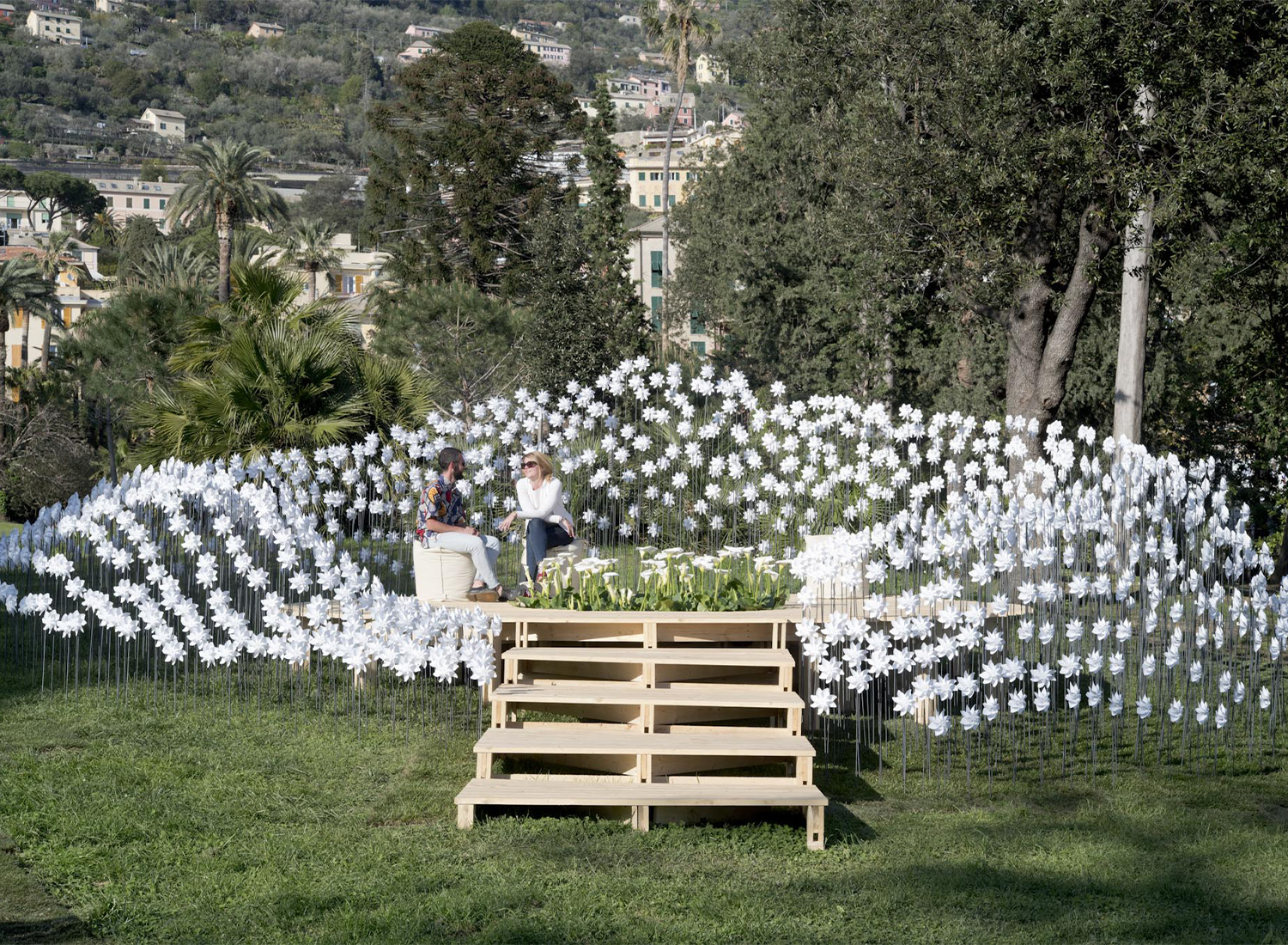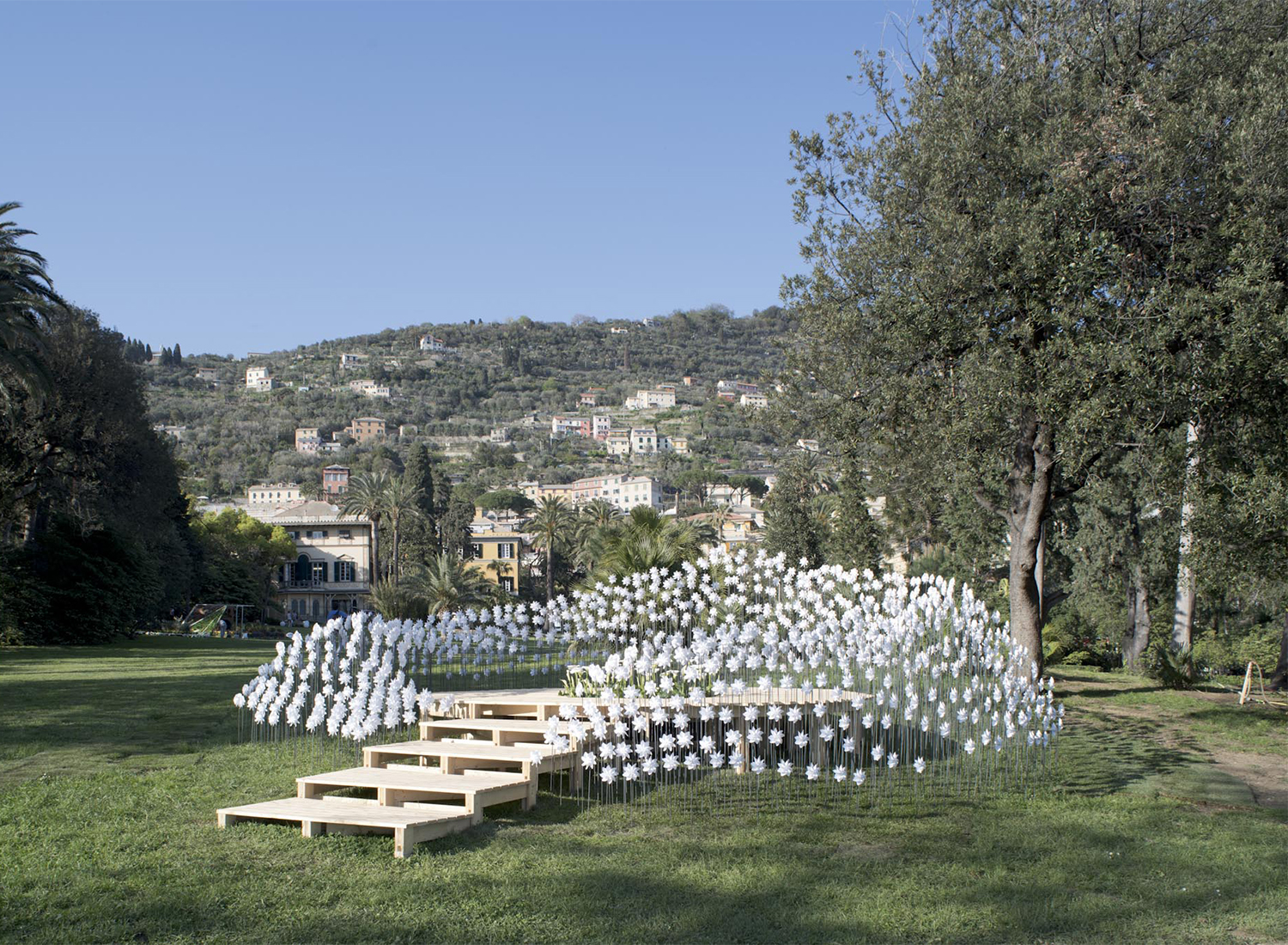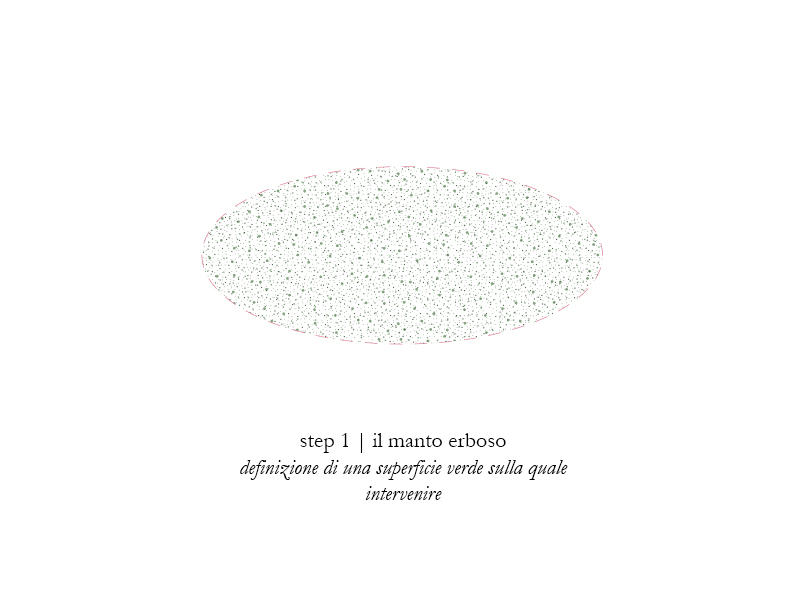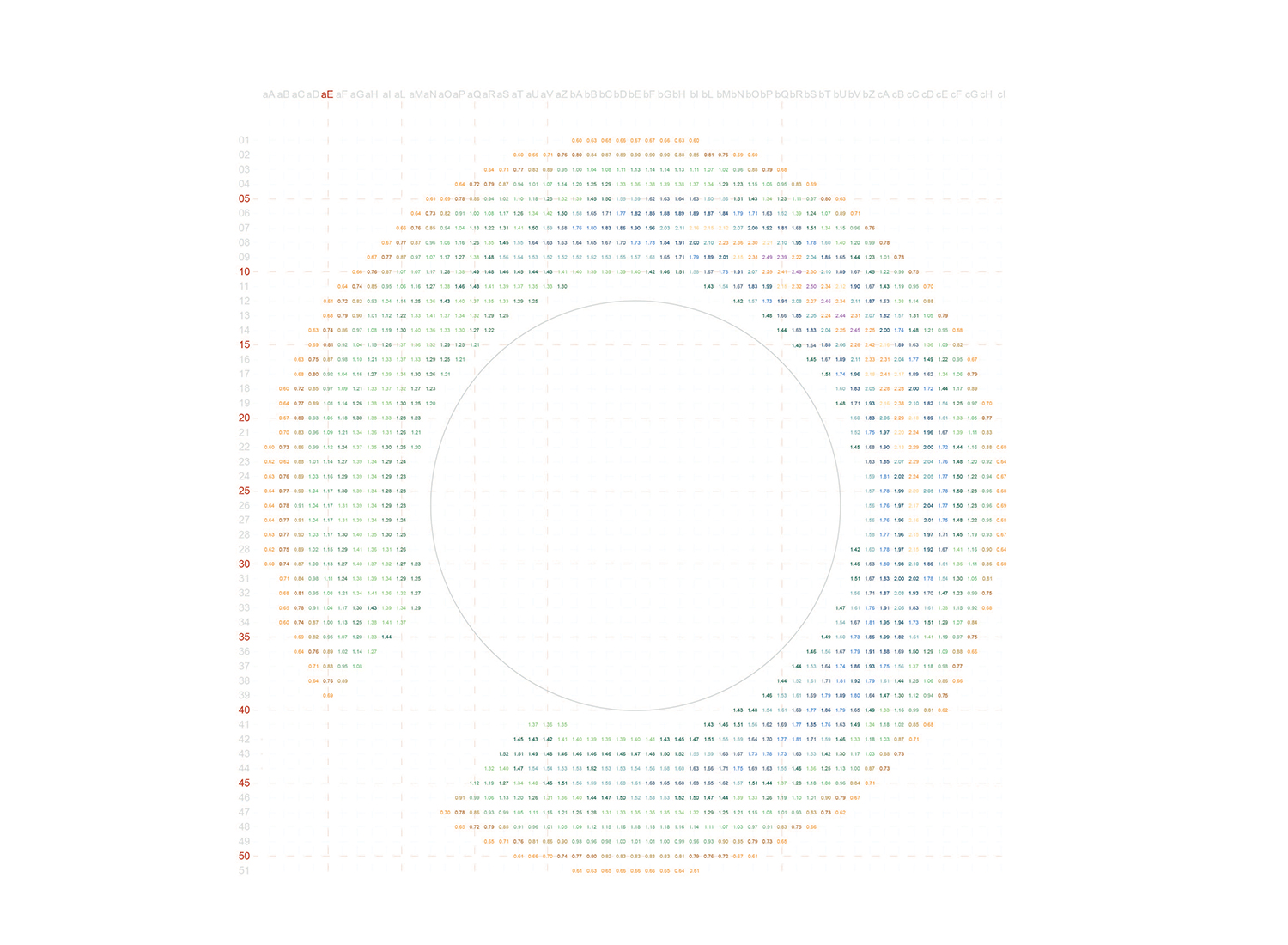LOCUS AMOENUS
A CONTEMPORARY INSTALLATION AMONG LANDSCAPE, PEOPLE AND PINWHEELS
Year: 2018
Location: Parchi di Nervi, Genoa, Italy
Client: Public Administration
Size: 100 sqm
Typology-tag: Exhibition installation
Phase: Concept research, preliminary, definitive, detailed design, construction
Design Team:
Margherita Del Grosso
Andrea Silvestri
Chiara Mondin
OBR Paolo Brescia Tommaso Principi
Paride Falcetti
Martina Mongiardino
Sponsor:
Habitat by Peluffo,
Basso Luigi Toy Production,
Lilium Aquae,
Unopiù,
NicArtFactory
Photo:
Anna Positano
Concept
Locus Amoenus is an interactive installation consisting of three components: the Green Field, the Garden of Pinwheels and the Patio. The first, the Green Field, constitutes the totality of the surface on which the installation takes place, thus becoming its crucial underlying element. Nervi’s parks in their morphological and vegetational specificity constitute the reference surface that is emphasized here and left free in its singularity. The second, the Garden of Pinwheels , consists of 1100 vertical elements white variable height, from a minimum of 60 cm to a maximum of 250 cm, arranged according to an orthogonal grid with 20x20cm mesh characterized by a multitude of pinwheels in the end higher. The intention is to recall the imaginary of the ornamental garden, in which the flowers are rendered abstract through the use of white and the stylization of the pinwheels.
The third, the Patio, is made up of a circular wooden platform emptied in the center and spaced about 45 cm from the ground, accessible to visitors and used both as a raised walkway and as a seat along the perimeter, confirming the centrality assumed by the existing turf.
The circular Patio recalls the bassin element derived from the baroque tradition of green design, intended as a hub, a point of reference and meeting place for garden guests. It is precisely the water that appears at the center of the Patio constituting the physical and conceptual barycentre of the installation: the positioning of a pool inhabited by water lilies and goldfish preserves its social role as a catalyst of events and closes the conceptual circle of analogies and correspondences.
Locus Amoenus is the result of a sequence of design actions. The Green field as a starting point for dialogue with the context. No more lawn as a surface, but as a backdrop in which the other components develop. On the green backdrop an orthogonal grid of 20 cm is applied which becomes a regulating instrument. The points of intersection of the mesh constitute the nodes on which the stems are extruded, thus defining the Pinwheel Garden. By subtraction, the center of the Garden defines the Patio and, therefore, the human presence in nature. The image of the floral garden is recalled by the modulation of the stems differentiated in height according to the geometry of a specific surface of organic matrix, capable of receiving, collecting, hiding and unveiling according to the position of the observer.
Locus Amoenus and the context
Locus Amoenus is born from the reflection made on the indispensable dialogic relationship that exists between project and context. In particular, the link with the historical park has been a stimulus for a contemporary re-reading of some components of landscape design. More specifically, our proposal updates the topos of the English garden, subtended by the tendency to the sublime defined by an “artificially natural” nature with the locus of the wonder of the baroque garden, of wonder and bizarre: hence the intention to mutate, respectively , the lacustral theme of the reed of romantic inspiration and the seventeenth-century bassin, understood as a geometrically defined component that becomes attraction during the erring in the garden. Transversal to the two themes is the presence of water as a central and unifying element, with a nymphaeum of aquatic calla lilies.
Two components, therefore, borrowed from the context and from the story that become the founding elements of the compositional process implemented through the interpretative paradigm of meanings. Two components that overlap and join the grassy surface of the parks, frame and specific background of the installation. Contemporaneity completes the panorama of definition through a path of analogies and correspondences that subject the flower to a process of reinterpretation. The artificial imitates the natural, however, acquiring dignity and adding semiotic autonomy: evoking the flower, the pinwheel becomes “contemporary flower”, loaded with a playful value in assonance with a pedagogical principle of sensitization to energy-environmental issues. The reference to renewable sources is superimposed on the set of meanings of which the project becomes a vehicle and integrating historical-compositional reflection with today.









